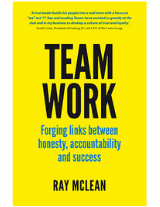
In my role as a facilitator, I regularly discuss with clients the need to influence behavioural change to positively impact on organisational culture.
Sometimes it’s talking with leaders who have authority to direct change, but mostly it’s enlightening team members on how they can influence change.
So what’s the difference between authority and influence?
Authority is about exerting a formal right to direct others to do something.
Influence is about compelling someone to make a change – in behaviour, in their decisions, or about their thoughts on someone or something. Influence is nothing to do with the organisational chart – anyone can have influence, including those not in a position of authority.
If you want to influence change in your business, consider these key steps:
- Know your audience
- Understand the organisational culture
- Understand individuals’ values
- Build relationships.
Know your audience
Understanding people’s behavioural preferences is a great way to learn how to influence them. One way that we do this is through the use of the DiSC® behavioural preference tool. This tool helps individuals to decode both their own and others’ behaviour in the workplace and how they prefer to be communicated with.
As individuals we all interpret situations, behaviour and communication differently. Having this extra degree of self-awareness, and understanding of the people around us, can help us to ensure we treat others how they would like to be treated, not how we like to be treated.
Identifying who you are trying to influence and what their style is (and how it differs from your own) is beneficial when working out the best way to have an effect on their behaviour or a course of action. Imagine a situation where you like lots of detail and process around a solution to a problem, but you’re trying to influence someone who likes a brief summary and is outcomes-focused. You would need to use their preferred style, rather than your own natural preference, to get the best possible outcome with that person.
Understand the organisational culture
Take the time to work out the current culture and how this might impact the changes you want to make. Find out who makes things happen in your organisation (we call these people ‘centres of influence’) and who are the blockers that might stop change from happening. If there is an accepted process for change already, look at what opportunities for influence that process affords you. If you work with the existing culture, rather than against it, your ideas will be seen as more congruent with the current ways of working and therefore less frightening.
Understand values and language
Making an effort to gain information on what an individual’s values and priorities are, and what benefits your ideas for change will have on their role, is important. Tailoring the language you use with them to effectively represent their values – putting it in a way they value and understand – and helping them to understand what’s in it for them will positively impact your level of influence with that individual.
Build relationships
Building strong workplace relationships is integral to influence. Strong relationships typically lead to trust, and if people trust you, they will be more likely to listen to your ideas and what you have to say. I have seen many examples in the workplace where people have great ideas but cannot influence others due to a lack of trust / relationship.
And it’s good to remember that having strong professional relationships is vital not just for influencing, but for high performance in the workplace as well.
How to approach influencing change
People have said to me, “Isn’t influence sort of like manipulation?”
It’s a valid question but the answer is no. You should view influence as constructive negotiation; as helpful in gaining traction with your ideas for change. If it feels manipulative maybe consider whether your motives are pure and if the change you’d like to effect is really going to positively impact the organisation?
People need to buy in to your ideas. There are lots of ways to achieve this: consulting with the relevant people or decision-makers, asking for their ideas and getting feedback from them on what you’re proposing.
It’s important that you identify the people whose support you need to get your idea for change over the line – who is going to be affected by the change and who will advocate on your behalf? It’s human nature for there to be ‘safety in numbers’, or what we call the ‘weight of numbers’, and if you gather a coalition of advocates, others are most likely to be positively influenced by the majority.
Lastly, use your authenticity to make your point. If you have expertise in your field and passion for the changes you’re proposing, let these show! Your enthusiasm for your ideas will be contagious. And remember to be thick-skinned – the change you want may take some time to achieve (but that’s nothing personal) and a strong level of persistence and patience might be required.
If you’d like to discuss how to increase your level of influence at your workplace, give us a call today on 03 9654 3744.
A version of this article originally appeared on the Institute for Managers and Leaders.



